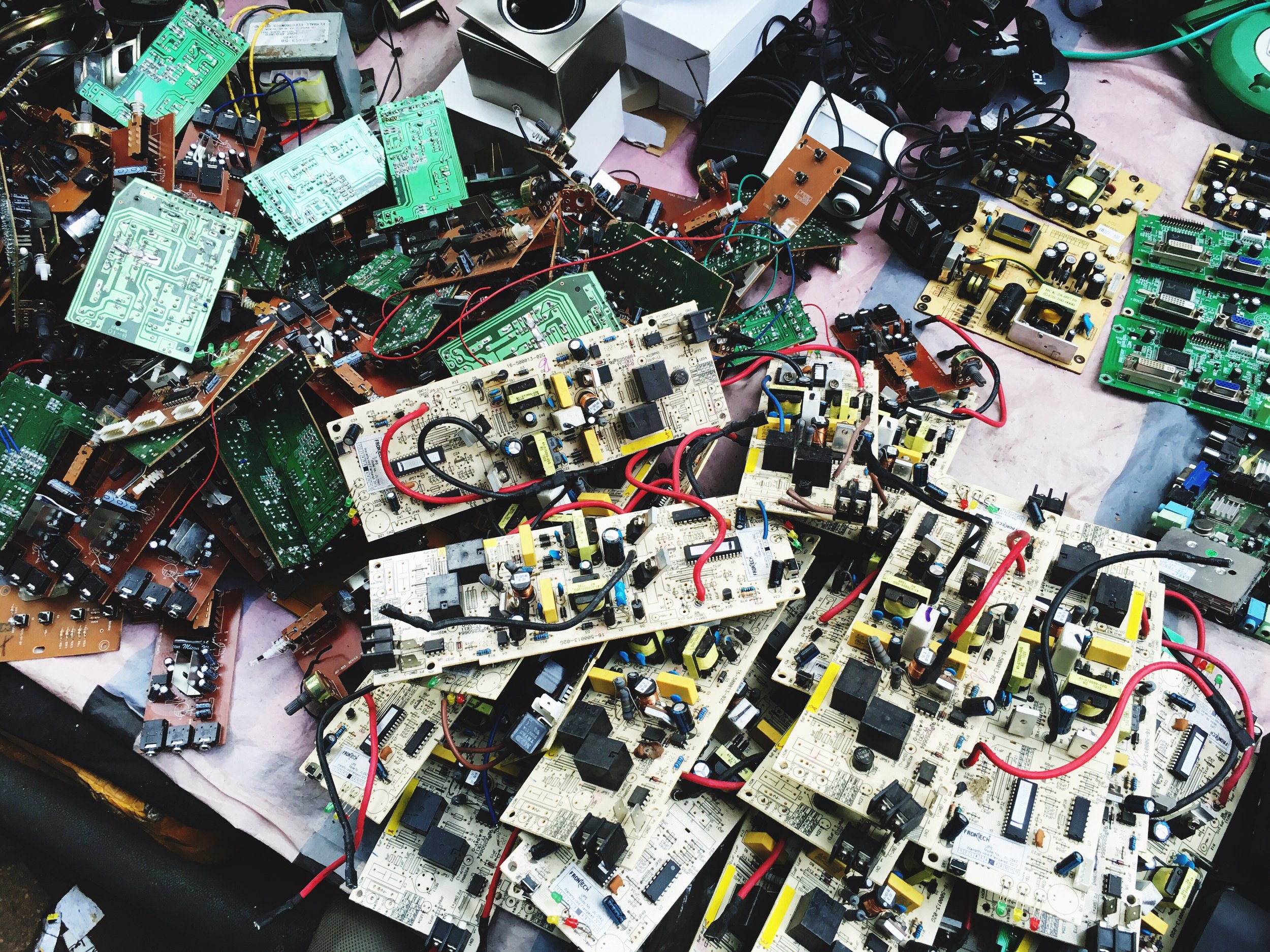BioCircuits
A Sustainable Future for Electronics
Materials exploration derived from biological origin sourced from plants, organic wastes, etc to build a circular economy. An eco-friendly conductive material derived from pistachio & coconut shells that can be used as a circuits for electronics.
Team: Shruti Pendharkar, Nainil Patel
Tools:
Kitchen Chemistry
Adobe Illustrator
Category:
Material Innovation
Material Research
Material Testing
Problem
Traditional circuit boards are energy intensive, generate high emissions, and rely on complex hazardous materials that contribute to electronic waste. As the demand for electronics grows, the urgency to develop sustainable alternatives has been even more crucial. These toxic materials do not break down when they enter the landfill, contaminating soil, water, and air causing a huge threat to the environment and human health.
Printed Circuit Boards (PCB)
of total e-waste weight comes from Printed circuit boards (1)
43.0%
of total energy is consumption comes from PCB manufacturing (2)
22.0%
of global CO2 emissions comes from traditional PCB manufacturing (2)
20.0%
Problem Statement
How can we create a bio-based conductive material for future electronics?
This innovative material, uses biochar sourced from pistachio and coconut shells, offers a sustainable and non-toxicalternative for various applications, particularly in flexible electronics.
Key Features:
Eco-Friendly & Sustainable:
Made from agricultural waste, reducing reliance on synthetic and non-biodegradable materials.
Conductive Properties:
Enables the creation of flexible electronic circuits, opening new possibilities in wearable technology, sensors, and sustainable tech innovations.
Soil-Enhancing End-of-Life:
Unlike conventional electronic materials that contribute to e-waste, this biochar-enriched material improves soil quality when discarded in landfills, rather than becoming a pollutant.
Material Expriements & Testing
Biocircuit undergoes multi-stage testing and development to evaluate its conductivity and performance:
Multimeter used for testing and measuring electrical resistance.
Component testing using a battery and LED, where the brightness of the LED indicates conductivity levels—the brighter the light, the higher the conductivity.
Nature of the Material
Biocircuit is a groundbreaking material developed through kitchen chemistry, leveraging simple, eco-friendly processes to create flexible and customizable electronic components.
Material Properties & Applications:
Moldable & Free-Form Design:
Biocircuit can be poured into molds, allowing for organic, fluid shapes rather than being confined to rigid, pre-defined structures.
Highly Versatile:
Its adaptable and flexible nature enables customization in size and form, making it suitable for diverse applications.
Ideal for Wearable & Sensor-Based Electronics:
Unlike conventional rigid circuits, Biocircuit seamlessly integrates into wearable technology and compact sensor-driven devices, supporting innovation in soft electronics and biodegradable tech solutions.
Material Innovation
Proof of Concept
To demonstrate the feasibility of this conductive this material, it was layered within another material to explore its future product application without compromising its effectiveness.
Conductivity Testing:
LED Integration:
Small LEDs were embedded into the material, with a low-power supply connected to test electrical conductivity.
Consistent Conductivity: '
Regardless of where the LEDs were placed on the surface, the material successfully powered all LEDs, proving uniform electrical distribution.
High Performance:
The material maintained stable conductivity, ensuring reliable performance for flexible electronic applications.
This proof of concept highlights the material’s versatility and efficiency, making it a promising solution for wearable electronics, sensors, and other sustainable tech applications.
Reference
1) Amirsoheil Honarbari, et al. “A Green Conformable Thermoformed Printed Circuit Board Sourced from Renewable Materials.” ACS Applied Electronic Materials, vol. 5, no. 9, 18 Sept. 2023, pp. 5050–5060, www.ncbi.nlm.nih.gov/pmc/articles/PMC10537457/, https://doi.org/10.1021/acsaelm.3c00799. Accessed 15 Oct. 2023.
2) Dong, Yue, et al. “Sustainable Additive Manufacturing of Printed Circuit Boards.” Joule, vol. 2, no. 4, Apr. 2018, pp. 579–582, https://doi.org/10.1016/j.joule.2018.03.015.













